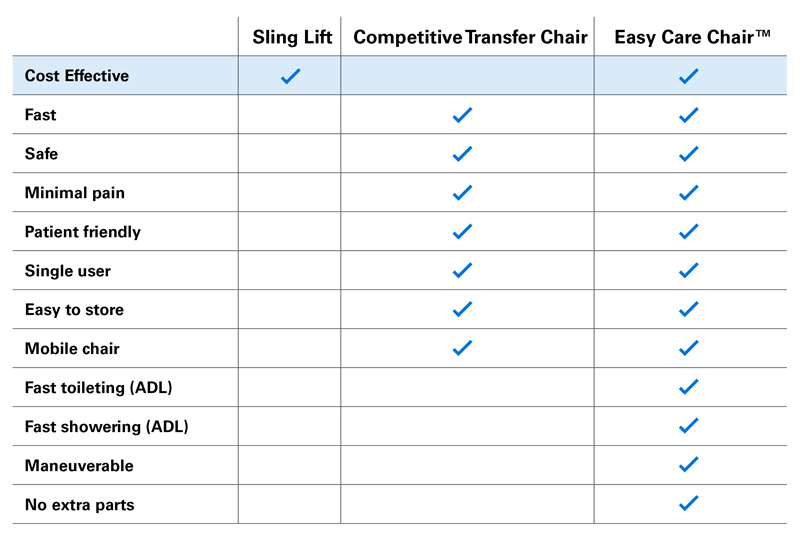Antiquated devices
Cranes, slings,
boards…
boards…
The open secret in the nursing profession is that the vast majority of nurses dislike and often resist using patient lifts, a 60-year old technology with numerous drawbacks (see table below).
The science of physical medicine is still in its infancy. The methods of transferring dependent patients have changed little since the early days of nursing. Cranes or lifts, slings, boards, and transfer sheets that are used to hoist, lift, or slide patients have been around for decades.
Every existing device has serious limitations. Of all the moderately-priced mechanized devices available, only patient lifts are used to move patients to wheelchairs, commodes, and shower benches. Other devices (i.e., air-powered sliding mats, expensive mattress or belt conveyor systems) transfer patients only to heavier and more specialized stretcher chairs or gurneys which are too expensive or inappropriate for daily home and institutional use. All the affordable devices require the patient to be hoisted, slid, bent, compressed, or dragged during transfer. The result is often unnecessary pain, anxiety, acting out, and adverse events.
Manual transfer devices such as sliding sheets or pressurized mats still exert considerable stress on the caregiver’s spine during transfer which can lead to occupational injuries.
Device Comparison

